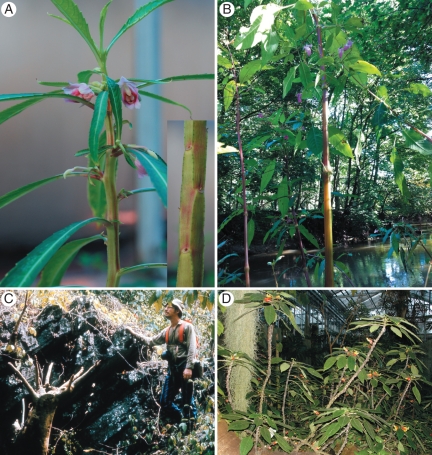Fig. 1.
Examples of the variation in growth forms of (A) Hydrocera and (B–D) Impatiens. (A) Hydrocera triflora, overview of the top part of the flowering stem, 4–5 ribbed (insert). (B) Impatiens glandulifera, relatively thick but herbaceous, semi-succulent stem with a limited amount of wood development, growing near the river Dijle, Leuven (Belgium). (C) Impatiens mirabilis (bottom left), very thick herbaceous, succulent stem consisting of abundant parenchyma tissue and a negligible amount of wood, growing on a limestone outcrop in Pulau Langgun (Malaysia); I. mirabilis is deciduous in the dry season (photo credit: Dr Max van Balgooy). (D) Impatiens niamniamensis, woody stems, growing in a tropical montane greenhouse of the Botanical Garden of Ulm (Germany).

